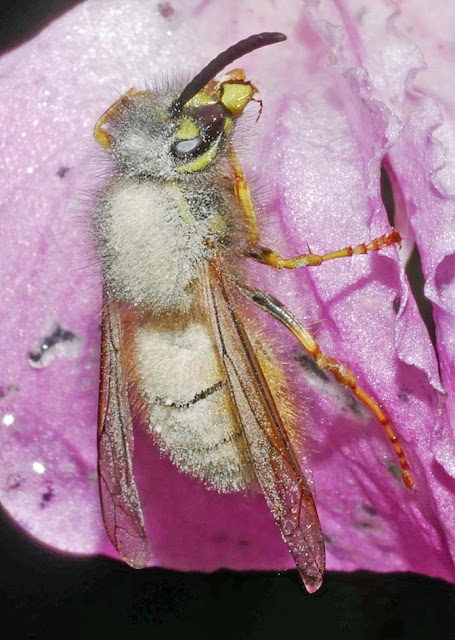It's now a 14 years since I first saw a harlequin ladybird in Country Durham, and a decade since I first found one in Teesdale. Yesterday, in precisely the same location, there were hundreds, feeding on ivy nectar. This abundant supply of energy in autumn, coupled with their capacity to remain active in cold weather, must surely be important factors in the phenomenal success of this invasive species.
Harlequin larvae seem to have an affinity with sycamore, perhaps because of the vast supply of sycamore aphids that they find on the leaves. At this location sycamore and ivy grow together, which might account for the population explosion, with dense ivy also providing a sheltered winter hibernation site.
There now seem to be two dominant morphs in this local population, one black with four large, ragged red spots and the other red with multiple black spots, which is more common.
This species
is known to be a predator of our native ladybirds and can also transmit a parasite that
kills other species. It also feeds extensively on eggs of butterflies and
moths. Over the last two decades it has spread rapidly, from
south east England to the Scottish border. It originated in central Asia but
was introduced elsewhere in misconceived biological control programmes aimed at
'environmentally friendly' aphid control in greenhouse crops. Wherever it has
been introduced it has escaped and has had a detrimental effect on native
insect populations.





























































